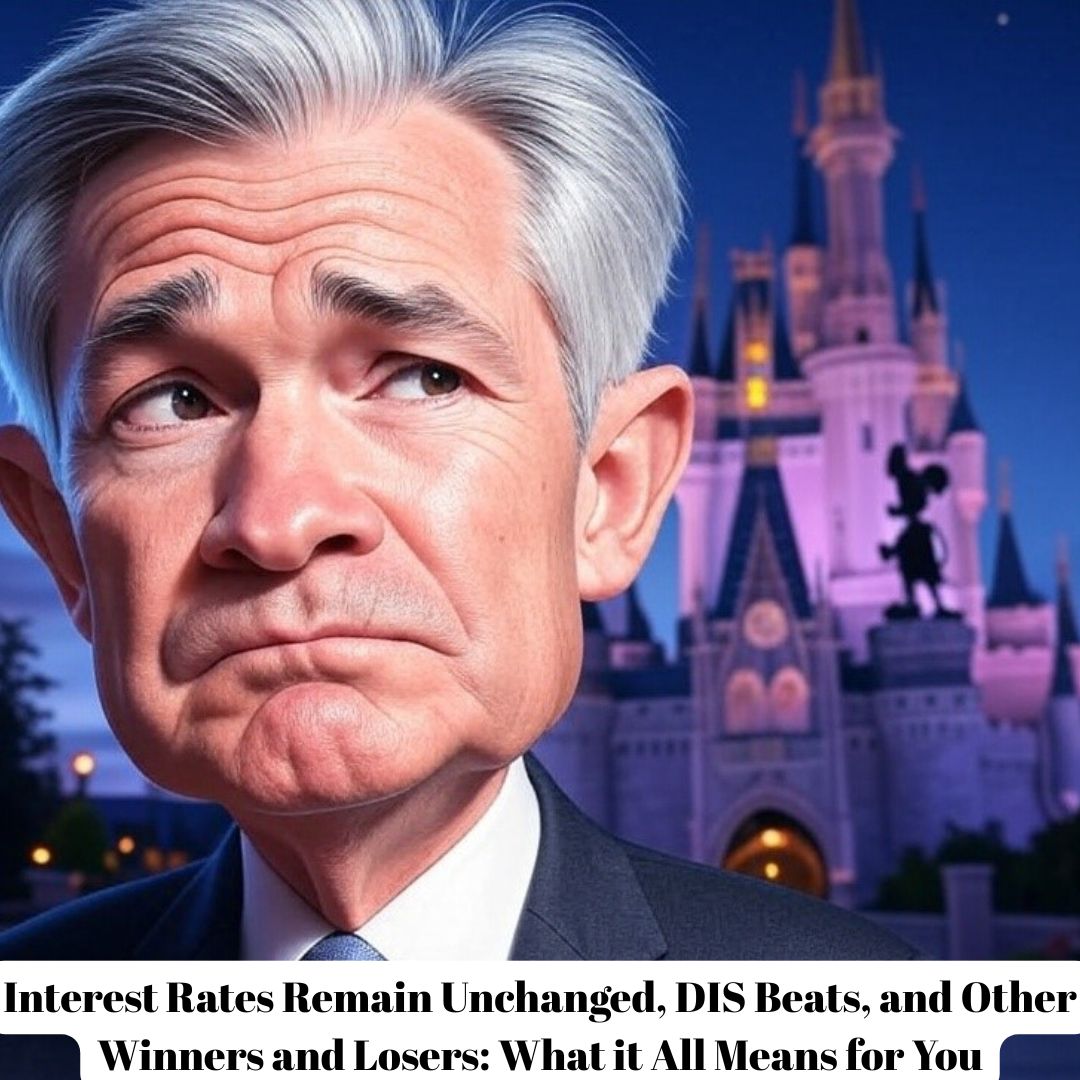
Market Crossroads: Fed Holds Steady While Global Rates Fall – What This Means for ETF Investors
Share
IndexRebalancing.com Editorial | May 8, 2025
In the ever-evolving landscape of global finance, the Federal Reserve's decision to maintain interest rates amidst escalating trade tensions has created a complex investment environment that demands strategic thinking from investors in both the ETF and individual equity markets. With the S&P 500 gaining 0.4% and breaking a two-day losing streak, investors are navigating a market that's responding to both monetary policy decisions and geopolitical developments.
Fed Stands Firm While Global Central Banks Cut Rates
The Federal Reserve decided to hold interest rates steady on Wednesday, May 7, despite mounting pressure from various quarters—including the White House—to lower them. This decision comes at a time when many central banks around the world are actively cutting rates to stimulate their economies.
As reported by The Guardian, China announced plans to cut interest rates and inject liquidity into its domestic economy as it prepares for the impact of the steep 145% tariffs recently imposed by the United States. This move by China joins a broader global trend, with data from Statista showing that most major economies have been implementing interest rate cuts since mid-2024.
Fed Chair Jerome Powell acknowledged the complex economic landscape during his post-meeting press conference, saying "There's so much that we don't know," referring to the uncertain trajectory of the U.S.-China trade situation and its potential impact on the American economy.
Why This Divergence Matters for ETF Investing
For investors holding positions in index funds like the S&P 500 ETF (SPY stock) or the tech-heavy QQQ stock, this global interest rate divergence creates both challenges and opportunities. When the U.S. maintains higher interest rates relative to other major economies:
- The dollar typically strengthens, which can hurt multinational companies with significant overseas revenue
- Borrowing costs remain higher for U.S. companies compared to international competitors
- Bond yields in the U.S. stay elevated, continuing to offer competition to equities for investor capital
The Risks of the Fed's Wait-and-See Approach
Powell's cautious stance—waiting for more clarity before making any rate adjustments—carries significant risks that ETF investors should consider. History has shown that central banks that wait too long to cut rates during economic slowdowns often find themselves playing catch-up, with potentially more severe consequences for markets and the broader economy.
The Fed explicitly stated that "risks to the economy are rising because of tariffs, which could both weaken the job market and push inflation higher." This creates the specter of "stagflation"—an economic condition combining high inflation with stagnant growth and rising unemployment—which Powell himself acknowledged as a worst-case scenario that would severely limit the Fed's policy options.
For holders of broad market ETFs like VOO stock or other low-cost index funds, this environment requires careful position management and strategic thinking about portfolio allocations.
Market Reactions: Winners and Losers
Wednesday's trading showed the market's sensitivity to both monetary policy and corporate developments:
- The Walt Disney Co. jumped 10.8% after beating profit targets and adding streaming subscribers
- Charles River Laboratories surged 19% on news of board changes and a strategic review
- Google parent Alphabet fell more than 7% on concerns about AI competition in search
- International Flavors & Fragrances dropped 7% after reporting declining sales
This disparity in performance highlights why investors in broad market ETFs like SPY stock or QQQ stock need to understand the underlying components of these funds and how they might respond to macroeconomic shifts.
Trade War Developments Add Complexity
The announcement of high-level talks between U.S. and Chinese officials this weekend in Switzerland initially buoyed markets, with the Dow briefly climbing 400 points. However, enthusiasm waned after President Trump stated he would not reduce his 145% tariffs on Chinese goods as a condition for negotiations—a stance that directly conflicts with China's prerequisite for meaningful discussions.
This trade tension introduces additional volatility for investors in index ETFs, particularly those with significant exposure to multinational corporations or companies with supply chains deeply integrated with China.
What This Means for Your Investment Strategy
In such a complex environment, having a systematic, rules-based approach to managing your positions becomes more important than ever. Investors in ETFs like SPY stock, QQQ stock, or individual equities face important decisions about allocation, timing, and risk management.
The Case for Systematic Position Management
Traditional portfolio rebalancing—adjusting allocations between stocks, bonds, and cash quarterly or annually—may not be responsive enough for today's rapidly changing markets. This is especially true when central bank policies are diverging globally and trade tensions introduce additional uncertainty.
A more dynamic approach to position management can help investors navigate these challenging conditions. Rather than making emotional decisions based on headlines or attempting to predict market movements, investors can benefit from establishing clear rules for when to add to or trim positions.
Enter Micro-Rebalancing: A Modern Approach for Today's Markets
Micro-Rebalancing (MR) offers an evolution of traditional portfolio management that's particularly well-suited to today's volatile environment. This system applies mechanical, rules-based logic to both ETF investing and individual equity positions:
- Establish a Target Allocation (TA) for each position—a fixed dollar commitment
- Define a "strike zone" or acceptable deviation from that target
- When market movements push the position outside this zone:
- If value falls below the lower threshold → Accumulate shares
- If value rises above the upper threshold → Trim shares
This approach removes emotion from investment decisions and creates a disciplined framework for managing positions in both bull and bear markets. It's particularly valuable during periods of heightened volatility like we're experiencing now.
Modern Tools Make Micro-Rebalancing Possible
Recent innovations in the financial industry have made Micro-Rebalancing accessible to individual investors:
- Fractional share trading allows precise position sizing
- Zero-commission platforms eliminate the cost barrier to frequent adjustments
- Real-time portfolio tracking provides immediate visibility into position status
Together, these developments enable a more sophisticated approach to etf investing than was previously available to individual investors.
How Interest Rate Decisions Impact Your ETF Strategy
Understanding how interest rates affect different sectors and asset classes is crucial for effective ETF investing:
- Tech-heavy ETFs like QQQ stock often respond negatively to higher rates due to their growth orientation
- Financial sector ETFs may benefit from interest rate differentials between countries
- Dividend-focused ETFs face competition from bonds when rates remain elevated
- Emerging market ETFs can be particularly sensitive to U.S. dollar strength resulting from higher relative U.S. rates
An effective Micro-Rebalancing strategy accounts for these sensitivities without attempting to predict market movements. Instead, it responds mechanically to actual price changes, adding to positions that have declined and trimming those that have appreciated significantly.
Global Interest Rate Trends: What's Next?
The current divergence between the Fed's stance and the rate-cutting trend seen in China, Europe, and many emerging markets creates a unique investment landscape. If this divergence persists:
- The U.S. dollar may continue to strengthen
- U.S. export-oriented companies could face additional headwinds
- International investments may become relatively more attractive
- Bond investors will need to carefully consider duration and geographic exposure
However, if economic data deteriorates or trade tensions escalate further, the Fed may ultimately join the global trend of monetary easing. Powell hinted at this possibility by acknowledging rising risks to the economy.
The Educational Edge: Empowering Your Investment Decisions
In times of market uncertainty, education becomes your greatest asset. Understanding both traditional portfolio management principles and modern approaches to position management can help you navigate complex market conditions with confidence.
For investors looking to deepen their understanding of these topics, several resources stand out:
- The Art of the Micro-Rebalance: The New Financial Frontier offers a comprehensive guide to implementing a dynamic position management strategy.
- Index Rebalancing: Smarter ETF Investing provides an accessible introduction to enhanced index fund management.
- Investing Made Easy: Institutional Style Management establishes the foundation of sound portfolio construction.
These educational resources can help investors develop a systematic, rules-based approach to managing their ETF investments and individual equity positions—particularly valuable during periods of market volatility and policy uncertainty.
The Bottom Line: Preparedness Trumps Prediction
Yesterday's Fed decision and market movements reinforce a fundamental principle of successful investing: being prepared for different scenarios is more important than trying to predict exactly what will happen next.
By establishing clear rules for position management and implementing a system like Micro-Rebalancing, investors can respond effectively to market changes regardless of whether the Fed eventually cuts rates or maintains its current stance.
For those holding SPY stock, QQQ stock, or other index ETFs, this disciplined approach helps ensure that your portfolio remains aligned with your long-term objectives despite short-term market fluctuations. Similarly, for investors in individual equities, a systematic approach to position sizing and management can help navigate volatility while maintaining focus on long-term growth.
In a world where central bank policies are diverging and trade tensions are escalating, the investors who succeed will be those who combine solid education with systematic execution.
Visit IndexRebalancing.com to learn more about Micro-Rebalancing and how it can enhance your approach to ETF investing and individual equity management.
Disclaimer: This article is for educational purposes only and does not constitute financial advice. All investing involves risk, including the potential loss of principal. IndexRebalancing.com provides educational content about investment methodologies but does not make specific investment recommendations.
